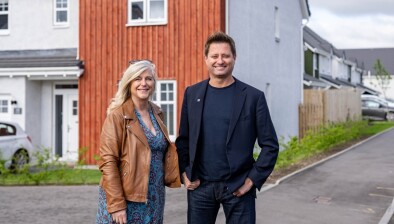Builders welcome Labour housing aim but ‘holistic plan’ required

Political parties must reverse cuts to local authority budgets and understand the barriers which are preventing housing delivery if they are to fully address Scotland’s housing demand, according to Homes for Scotland.
On a visit to Parkhead Housing Association yesterday, Scottish Labour leader Richard Leonard said his party would aim to build at least 12,000 homes for social rent a year.
The move would support almost 50,000 jobs in Scotland and form a fundamental part of Labour’s bid to tackle poverty and inequality, Mr Leonard said.
Responding to the comments, Nicola Barclay, chief executive at Homes for Scotland, said: “If we are to meet the housing need and demand of our growing population, it is vital that all political parties support the delivery of homes of all tenures, so this announcement is to be welcomed. However, in order to actually deliver the homes on the ground, it is absolutely vital that this support is matched by an understanding of what is actually stopping this delivery right now. Our barriers and solutions paper sets out what is required.
“One key aspect is adequate resourcing for Local Authorities in terms of both funding and staff. Cut backs to Local Authority budgets is having an undeniable impact on the speed of the process, which has a direct impact on housing delivery. Only by adequately resourcing their built environment teams will this blocker be removed.
“We must therefore look holistically at the whole system to ensure that all regions across the country get the homes needed to sustain their communities.”
According to Scottish Labour, there has been a steady decline in the proportion of homes in Scotland available for social rent over the last 15 years, and there are at least 170,000 households on social housing waiting lists.
The party said its proposals would roughly treble the amount of council and housing association homes being built each year – a move the party said is necessary to take the heat out of the private market and offer more choice to tenants.
The Common Weal think tank has urged parties to stop “trading numbers at each other”, and instead embrace a housebuilding policy which is “demand-led”.
The Scottish Government has established a target of building 50,000 ‘affordable homes’, 35,000 of which are intended to be social housing, from 2016-2021.
However the think tank said that neither of these figures address Scotland’s deficit in housing supply.
According to a 2013 Audit Scotland report, Scotland would need to have constructed over 21,000 houses per year between 2011 and 2035 - over 500,000 homes across 25 years - just for Scotland to maintain its current level of housing supply due to demographic changes, including the increasing trend towards people living on their own.
Dr Craig Dalzell of the Common Weal warned that the policy debate in Scotland, focused as it is on arbitrary target numbers, does not comprehend the scale of the challenge.
Speaking to CommonSpace, he said: “Scotland clearly has a long way to go towards its goal of ensuring adequate housing for everyone. We also have a long way to go on the policies of how we get there. Too often, political parties will trade numbers at each other - each claiming to promise a few more houses built per year than the other.
“Common Weal takes a more productive approach. We wish to ensure that the upcoming Scottish National Investment Bank will set as one of its missions the goal of a demand-led approach to housing. We shall soon be publishing work which shall show how SNIB-backed loans can finance social housing that far exceeds anything that can be offered by the private sector in terms of quality at a price significantly below that which is currently offered even by so-called ‘affordable’ housing.
“Of course, this debate cannot simply be about housing alone but must remember the infrastructure which goes into making a house into a home and a housing estate into a community. Forgetting this risks stressing existing services like schools and healthcare by imposing additional demand on them without providing additional capacity. We have to drop arbitrary house building target numbers and start addressing the actual, real needs of those who suffer from inadequate housing in Scotland.”
















